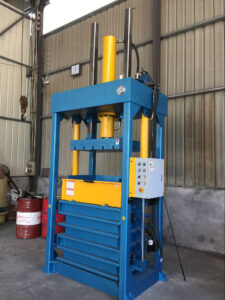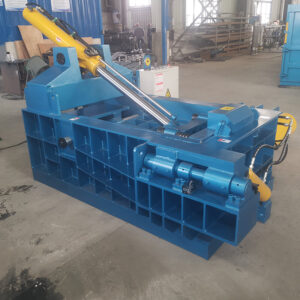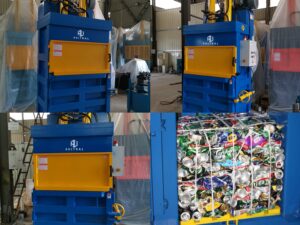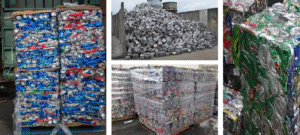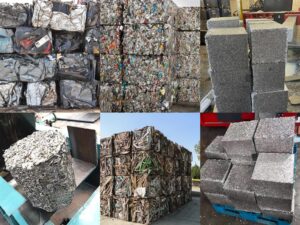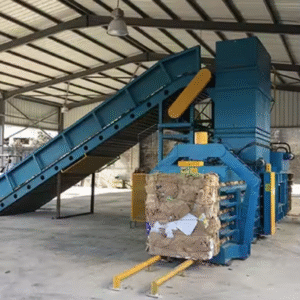Introduction
In today’s industrial landscape, shredder and baler machines have become indispensable equipment for waste management and material processing. These powerful systems combine cutting, crushing, and compacting technologies to transform various waste materials into manageable, transportable, and recyclable bales. From paper recycling plants to automotive scrap yards, shredder-baler combinations are revolutionizing how industries handle their waste streams while improving operational efficiency and sustainability.
Types of Shredder-Baler Machines
1. Vertical Shredder-Balers
-
Ideal for processing paper, cardboard, and light plastics
-
Compact footprint for space-constrained facilities
-
Typical output: 2-5 tons per hour
-
Automatic bale tying systems with wire or PET straps
2. Horizontal Shredder-Balers
-
Designed for bulkier materials like textiles, foam, and plastic films
-
Continuous feeding capability
-
Higher throughput capacity (5-15 tons/hour)
-
Integrated pre-shredding and final compression stages
3. Two-Stage Shredding Systems
-
Primary shredder reduces material size
-
Secondary baler compacts shredded material
-
Perfect for electronic waste and metal recycling
-
Allows for better material separation
Key Technological Features
Modern shredder-baler machines incorporate several advanced technologies:
1. Intelligent Control Systems
-
PLC-based automation for consistent operation
-
Touchscreen interfaces with preset programs
-
Remote monitoring capabilities via IoT
2. Safety Mechanisms
-
Emergency stop systems with multiple access points
-
Interlocked safety doors
-
Overload protection sensors
3. Energy Efficiency
-
Variable frequency drives for motor control
-
Energy recovery systems
-
Optimized hydraulic circuits
Industry Applications
1. Waste Management
-
Municipal solid waste processing
-
Landfill diversion programs
-
RDF (Refuse Derived Fuel) production
2. Recycling Operations
-
Paper and cardboard recycling plants
-
Plastic film and bottle recovery
-
Metal scrap processing
3. Manufacturing
-
Production waste reduction
-
Off-spec product disposal
-
Packaging material recycling
Environmental Benefits
Shredder-baler systems contribute significantly to sustainability efforts:
-
Volume Reduction
-
Up to 90% reduction in waste volume
-
Lower transportation costs
-
Reduced landfill usage
-
Material Recovery
-
Clean, segregated material streams
-
Higher quality recyclables
-
Improved resale value
-
Energy Savings
-
Efficient processing reduces energy consumption
-
Compacted bales require less energy for transport
-
Potential for waste-to-energy conversion
Future Trends
The shredder-baler industry is evolving with several emerging technologies:
-
AI-Powered Sorting
-
Machine vision for material identification
-
Automated quality control
-
Smart separation systems
-
Mobile Solutions
-
Containerized units for temporary sites
-
Truck-mounted systems
-
Rapid deployment configurations
-
Advanced Materials Processing
-
Nanotechnology for material enhancement
-
Chemical treatment integration
-
Improved wear-resistant components
Conclusion
Shredder and baler machines represent a critical link in modern waste management and recycling value chains. By transforming diverse waste materials into compact, uniform bales, these systems enable more efficient transportation, storage, and processing of recyclable materials. As environmental regulations tighten and raw material costs rise, the importance of high-performance shredder-baler systems will continue to grow across industries. Future advancements in automation, material science, and energy efficiency promise to further enhance the capabilities and sustainability of these essential machines.

